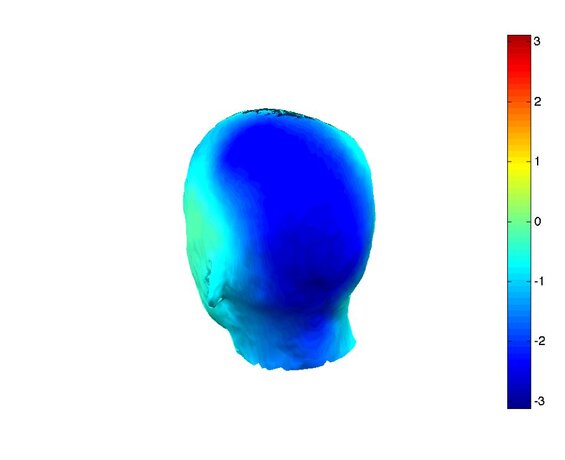Object shift and the Brain
In a first study (Roll, Horne, and Lindgren, 2007) using visual stimuli, the restriction of Swedish ‘Object Shift’ to unstressed pronouns was explored. In Swedish, sentences where an object pronoun precedes a sentence adverb, such as Han åt den inte ‘(lit.) He ate it not’, are well-formed, whereas sentences with a full noun phrase (NP) object preceding a sentence adverb, such as Han åt sylt/sylten inte ‘(lit.) He ate jam/the jam not’, are ill-formed. It is not obvious whether the restriction should make reference to the word category or the pragmatic features of the object. The shifted position associates the object with given information, and full NP objects tend to express new information more so than pronouns. Among full NP objects, indefinite objects more often realize new information than definite objects.
In the ERPs for the indefinite full NP object condition, there was a posterior negative deflection appearing 200-400ms after the detection point of the grammatical anomaly. Similar effects have earlier been obtained for words that are difficult to integrate in a pragmatic context. Thus, indefinite object shift appears to give rise to a structure that the brain finds difficult to interpret pragmatically, due to a clash between the position of the shifted object and its inherent pragmatic properties. A P600 effect showed syntactic reprocessing following the negativity in both full NP object conditions. Full NP Object Shift was rated as unacceptable, whereas pronominal Object Shift was acceptable. There was no difference between the indefinite and definite full NP conditions in the acceptability judgments.
There was also an enhanced posterior negativity 300-500 ms after full nouns as compared to pronouns, as well as a Left Anterior Negativity (LAN) 300-600 ms after the conjunction men ‘but’ that was significant after indefinite objects.
The topographical distribution of the negativity in the Ind condition was left posterior.

- Roll, M., Horne, M., and Lindgren, M. 2007. Object shift and event-related brain potentials. Journal of Neurolinguistics, 20(6), 462–481.

